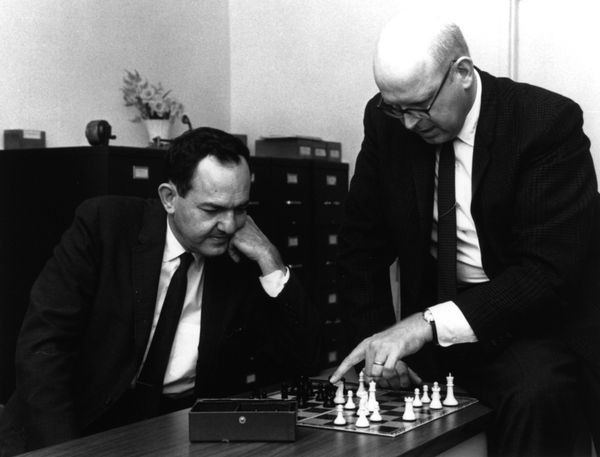First Light: Unveiling the World's First AI Model
The story of artificial intelligence (AI) winds through decades of philosophical musings, science fiction dreams, and groundbreaking scientific leaps. But where does it actually begin? Pinpointing the "first" AI model is a tricky task, as the field's history is woven with incremental advancements and blurred lines between human ingenuity and machine capability. Yet, there are models that stand out – pioneers that cracked open the possibilities of AI and paved the way for the remarkable systems we interact with today.
So, let's step back in time and meet some of these early contenders:
- The SNARC (1951): While not strictly a computer program, the SNARC, conceived by Marvin Minsky and Dean Edmonds, is considered the first artificial neural network. This "neural net machine" simulated a brain with simple neurons wired together, laying the groundwork for the deep learning revolution we see today.
 |
| SNARC (1951) |
- The Logic Theorist (1956): Developed by Allen Newell, Herbert Simon, and J.C. Shaw, this program proved mathematical theorems using formal logic. It demonstrated the potential of AI in areas like reasoning and problem-solving, influencing fields like robotics and expert systems.

Logic Theorist - 1956
- The General Problem Solver (GPS) (1957): Created by Newell and Simon, GPS took AI a step further by introducing search algorithms and heuristics. It could solve a range of problems by breaking them down into smaller, manageable steps, showcasing the power of planning and decision-making in AI.

General Problem Solver (GPS) (1957)
Allen Newell(right) and Herbert Simon
While these models paved the way, defining the "first" AI can depend on specific criteria. Should it be the first to learn or adapt? The first to exhibit human-like behavior? The first to be used in a practical application?
One such candidate is ELIZA (1966): Developed by Joseph Weizenbaum, ELIZA was a text-based psychotherapist program. While it wouldn't diagnose or offer real therapy, it could hold simple conversations using pattern matching and keyword responses. ELIZA surprised people with its ability to mimic human interaction, sparking debates about the nature of intelligence and raising questions about what it means for a machine to be "social."
 |
| Eliza(1966) Developed by Joseph Weizenbaum |
Ultimately, the title of "first AI model" remains debatable. However, the legacy of these pioneering systems is undeniable. They proved that AI wasn't just a figment of science fiction, but a tangible possibility with the potential to solve real-world problems and challenge our understanding of intelligence itself.
This journey through the history of AI is only a glimpse into a fascinating and ever-evolving field. As we continue to push the boundaries of technology, who knows what remarkable accomplishments the future holds for AI? Perhaps, someday, we'll look back on these early models and smile, appreciating the first flickering candlelight that ignited the revolution.

Comments
Post a Comment